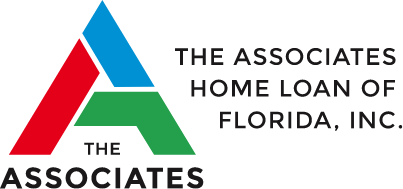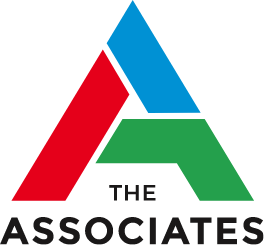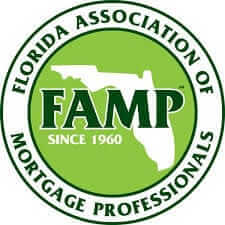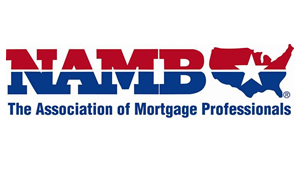
How to Get Rid of Private Mortgage Insurance (PMI) Early
PMI (Private Mortgage Insurance) can be a scourge on homeowners. In addition to the cost of repaying your mortgage, you have to make additional payments—and finding room in your budget can be difficult.
So the question is: how to get rid of PMI early? It’ll eventually disappear by itself, but most of us don’t want to wait that long. In this guide, we explain what PMI is, who it affects, and how to get rid of PMI early.
What is PMI?
Private mortgage insurance is a mandatory payment for some homeowners. It’s used by most lenders as insurance in case the borrower defaults on their loan.
It typically costs $30-70 per month, per $100,000 of the loan principal. This is the sum that the lender offered for your mortgage. For example, if you borrowed $400,000 for your mortgage, you’d likely pay $120-280 per month for private mortgage insurance. This rate depends on many factors, including:
- Your lender
- The value of the property
- Your initial down payment
- Your credit score
However, not all homeowners are charged for this insurance. You can also escape from PMI earlier than you expect by making some adjustments to your mortgage. First, let’s address who has to pay this type of insurance—these are the people who need to know how to get rid of PMI early.
Who Must Pay PMI?
Most conventional 30-year mortgages require a down payment of below 20%. This is usually the threshold for lenders charging PMI— if you’ve made a larger down payment, you might not be charged for insurance. This is because lenders view substantial down payments as a sign of a trustworthy borrower; monthly repayments don’t need to be as high and the borrower is less likely to default.
Not all mortgages with lower down payments require PMI. For example, if a government FHA loan was used, PMI will usually not be needed. Private lenders might also have different rules—you should ensure that you understand your lender’s terms thoroughly before taking out a mortgage.
Your credit score is another key factor in determining who must pay PMI. If your down payment is less than 20%, and you have an excellent credit score, your lender might not require insurance, as you can demonstrate a good history of repayments. However, if your credit score is poor, your lender will likely require you to pay insurance for a down payment of up to 22%.
When Can You Stop Paying PMI?
You won’t need to pay PMI when you reach a threshold of 22% home equity (more on this below.) You might be able to stop your payments before then, and there are also steps you can take to change your mortgage balance and remove the need for insurance payments.
If you want to learn how to get rid of PMI early, it’s important to know your options. This will help you choose the most suitable course of action for your needs; there’s no catch-all “best course of action”.
Steps to Stop Paying PMI
Check out the steps below to discover how to get rid of PMI early.
1. Reduce Your LTV Ratio to 78%
The most consistent way of removing private mortgage insurance is to bring your home equity up to 22%. The federal Homeowners Protection Act indicates that when your LTV (loan-to-value) ratio reaches 78%, you’re not required to pay private mortgage insurance.
Your loan-to-value ratio represents how much of the property is covered by a loan, and how much you own. If you made a down payment of 20%, you’d only need to pay an additional 2% of the property’s value to end your PMI payments. However, if your initial down payment was only 10%, it might take much longer to reach this goal.
When you reach this threshold, get in touch with your lender to ensure that PMI has been removed.
2. Request Cancellation at a Mortgage Balance of 80%
Another tip for how to get rid of PMI early is to request removal once you reach a mortgage balance of 80%, so you hold 20% equity. This threshold entitles you to make a request, although the lender has the right to refuse this if it perceives uncertainty in your repayments.
Making an additional contribution to your original down payment is a good way to show that you’ve built up cash reserves since the initial financing process and can afford to make regular repayments.
3. Refinance Your Home
Refinancing your mortgage to adjust the balance of how much you owe is another tactic for how to get rid of PMI early. Your lender will have to approve the refinancing, but this might bring you up to the crucial 22% equity limit to stop making insurance payments.
4. Have Your Home Reappraised
If your property’s value has increased since purchase, your equity might be worth more than it was previously. This means that you might be able to use your equity to leverage more favorable terms with your lender and reduce the LTV ratio. This, in turn, can mean that you’re no longer required to make PMI payments.
5. Reach Your Midpoint Mortgage
Knowing how to get rid of PMI payments early is advantageous, but you should know that you won’t be required to make any payments after the midpoint of your mortgage term. In a standard 30-year mortgage, this is after 15 years.
How Do I Know If I Am Still Paying PMI?
If you think you shouldn’t be paying private mortgage insurance anymore, or you’ve recently taken steps that mean you’re no longer eligible, you should contact your lender and have them confirm that they’re no longer charging you. It’s worth remaining in regular communication with your lender for this reason.
Getting Rid of Private Mortgage Insurance
To learn more about how to get rid of PMI early and whether you can stop making private mortgage insurance payments, get in touch with the team at Associates Home Loan today. Our home loan experts will be able to advise you on your best course of action.
Recent Posts
What is a Private Mortgage? Your Guide to Private Mortgage Lending
When you need money for a project, investment, or renovation, you need it quickly and on your own flexible terms. At The Associates Home Loan, we work to create a seamless loan experience, securing loanRead More
Private Lender vs. Bank Mortgage: Everything You Need to Know
Are you ready to buy a new home but can't get through the strict lending requirements of a conventional mortgage? Or maybe you're a self-employed entrepreneur, have less than stellar credit, or are venturing intoRead More
How to Get a Joint Mortgage With One Bad Credit: Tips for Couples
Please Note: - Associates Home Loan of Florida does not provide personal loans. - We do not provide private mobile home loans. - We are only operating in and providing property loans for theRead More









